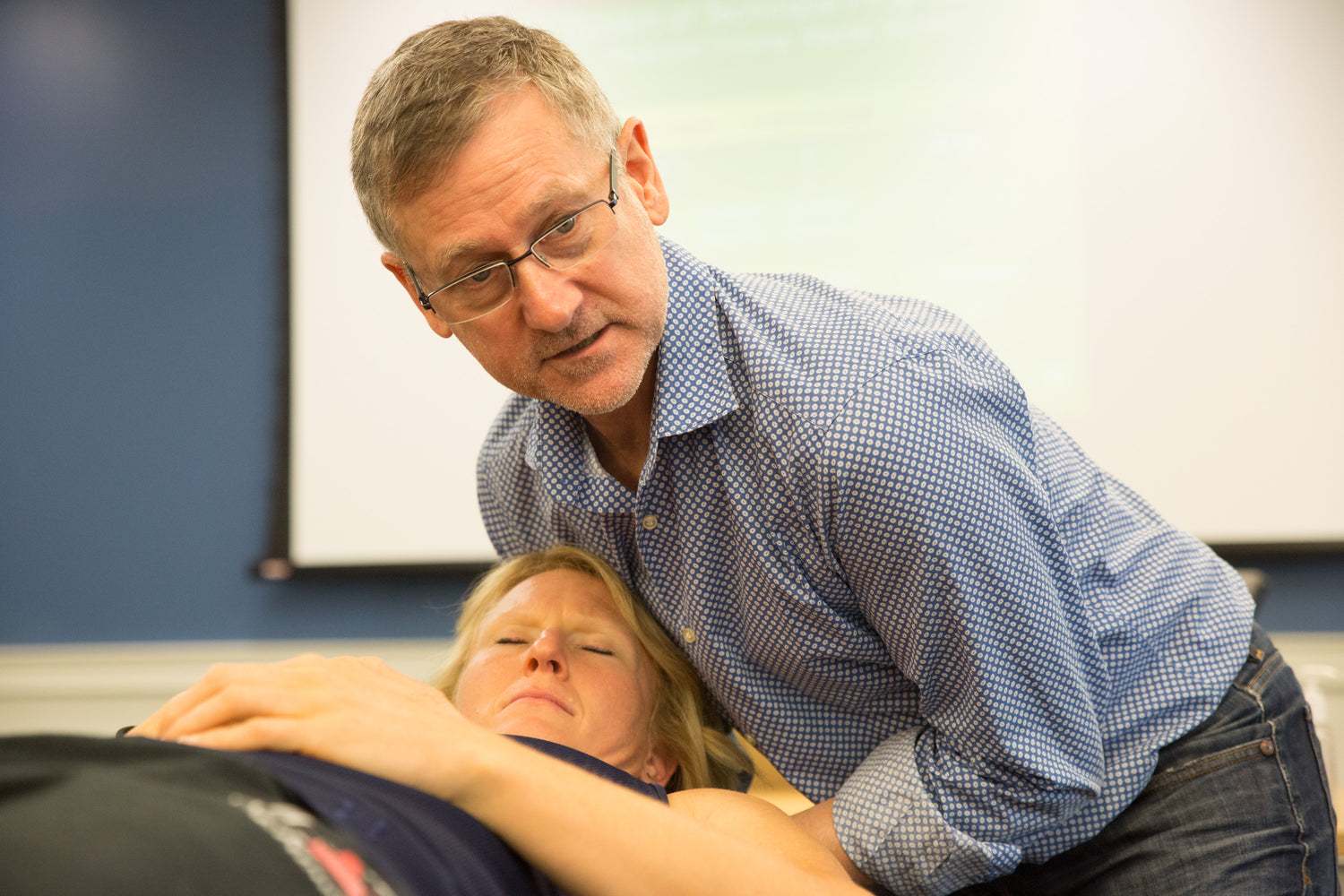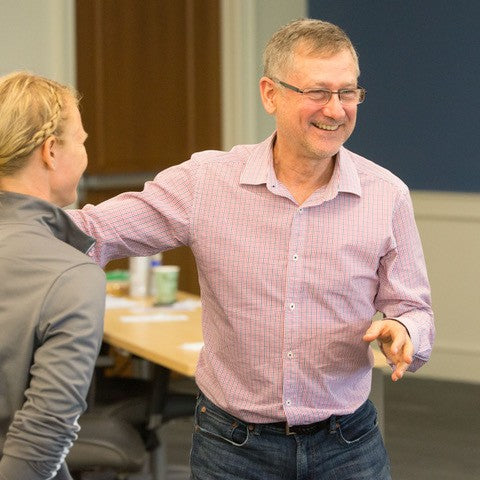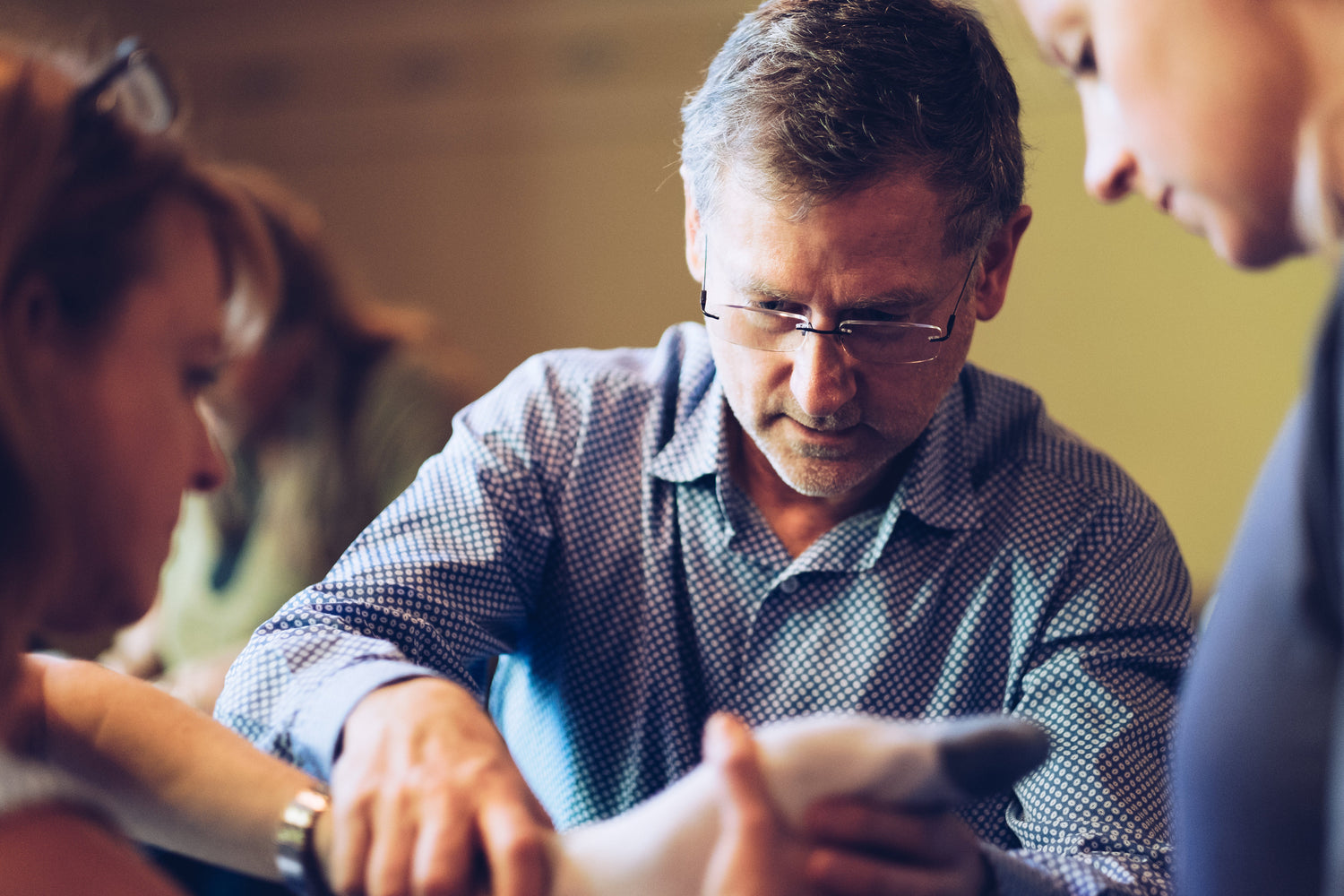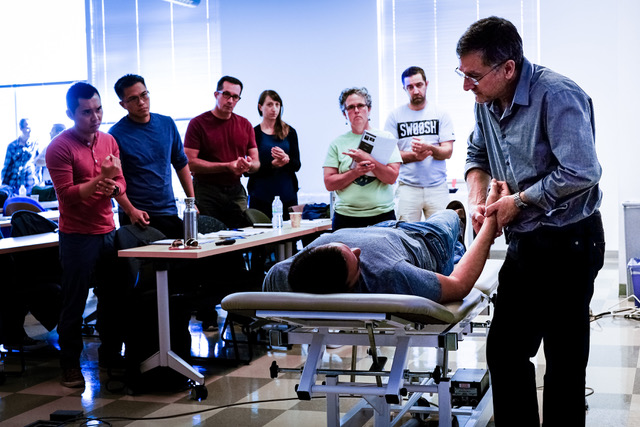Description
Level 2 Clinical Neurodynamics courses advance and refine assessment, diagnostic categories, and clinical reasoning. Level 2 courses takes expands the clinical conditions the practitioner can manage, including how to detect and treat the neurodynamic aspect to:
- Cervicogenic headache.
- Thoracic outlet, brachial plexus and 1st rib.
- Suprascapular and axillary nerves (aka shoulder pain).
- Pronator and cubital tunnel syndromes.
- Ulnar nerve at the wrist.
- Digital nerves.
- Thoracic neural tissue
- Mid-lumbar radiculopathy
- Hamstring injury and sciatica nerve - rehab
- Femoral nerve, knee pain and myofascial.
- Heel pain and foot nerves.
hybrid delivery
FOUR (4) hours are self-paced online content to be completed before attending the in-person session. SIXTEEN (16) hours of live and in-person learning over 2-days with an NDS instructor.
- You will be given access to the self-paced, online component approximately one month prior to the in-person course.
- Once you have begun the online component, there are absolutely no refunds. Transfers will be considered on a case-by-case basis.
Course Instructor
Course Highlights
- More diagnostic categories and advanced clinical reasoning illustrations of Shacklock's Clinical Neurodynamics system.
- Demonstrations of neurodynamic problem solving.
- Detailed hands-on (manual and active) neurodynamics and discussional elements.
- Two new neurodynamic models for specific application to different regions and structures based on regional variations in anatomy and biomechanics.
- Many new techniques for manual diagnosis and integration of the nervous with the musculoskeletal system and rehabilitation.
Course Objectives
Advance and refine manual diagnosis and treatment skills to new areas of neurodynamics.
Learn diagnoses and manual treatments for more nerves and neurodynamic dysfunctions:
- more nerve diagnostic and therapeutic techniques.
- provide a new, mechanisms and evidence-informed, clinical reasoning model for more direct and easier problem solving for neurodynamic disorders.
- update the latest validity and diagnostic and therapeutic efficacy evidence for neurodynamics.
- present new neurodynamics scientific studies that increase clarification of neurodynamic mechanisms and broaden neurodynamics into more clinical syndromes.
- provide more progressions of neurodynamic techniques from the severe pain and incapacity through to neurodynamics for high performance in sport and athletics.
- provide a new evidence-informed clinical reasoning model for neurodynamics that can be used to include or rule in or rule out neurodynamic disorders, classify disorders in terms of mechanisms and plan and execute treatment for all levels of patient/client function.
- how to apply more extensively bilateral neurodynamic tests according to our recently published validation studies.
What you will learn
How to:
- Diagnose the existence (or absence) of neurodynamic disorders (rule in or out).
- Treat new and more complex movement dysfunctions in relation to neurodynamic disorders.
- Detect a neurodynamic aspect to muscle dysfunctions and imbalances.
- Create progressions for severe pain and incapacity through to high performance for the sports person and athlete.
- How to apply more extensively bilateral neurodynamic tests according to our recently published validation studies.
Upper Quarter Level 2 - How to detect and treat the neurodynamic aspect to:
- Cervicogenic headache and suboccipital myodural connections (upper cervical spine).
- Thoracic outlet, scalenes, first rib and brachial plexus, scapular dyskinesia.
- Suprascapular nerve
- axillary nerve (aka posterior shoulder pain in the athlete, eg. pitcher, swimmer).
- Medial elbow pain (median and ulnar nerves at the elbow), pronator and cubital tunnel syndromes.
- Radial sensory nerve - applied to thumb pain and masquerading as de Quervain's disease.
- Ulnar nerve at the wrist - Guyon's canal.
- Digital nerves.
- Techniques for treating nerve with innervated tissues.
Lower Quarter Level 2 - How to detect and treat the neurodynamic aspect to:
- self-treatment and mobilisations combining interface and nerve root for low back and lumbar radiculopathy.
- complex lumbar multi-dysfunctions: sliding and opening and closing dysfunctions.
- differentiate between hamstring length produced by hamstrings versus a neural element.
- progress hamstring rehabilitation with a neural element from early first aid to rehab through to performance.
- apply the bilateral and contralateral straight leg raises to more clinical problems (buttock pain and thigh pain/hamstrings).
- test for femoral nerve and muscular components to anterior thigh and knee pain.
- medial knee pain, genicular and saphenous nerve branches.
- sural nerve disorders for calf, Achilles tendon and foot pain
- medial heel and plantar foot pain through the medial calcaneal nerve.
- integrated techniques for plantar fascia disorders with a neural element (eg. tibial and medial and plantar nerves).
- opening, closing and nerve mobilisation progressions for the interdigital nerves.
- The course includes combined digital manual techniques over nerves during neurodynamic mobilizations.
Certification
You are almost there!
To be a Certified NDS Practitioner requires:
Completion of Level 1 and Level 2 Hybrid or IN-PERSON Neurodynamics courses.
Successful completion of NDS Level 1 and 2 Certification Exams.
If you have completed the online NDS course and wish to attend an In-Person equivalent course an appropriate credit towards that course will be applied.Clinical Neurodynamics Solutions is more than a course; it's a learning and certification process.






